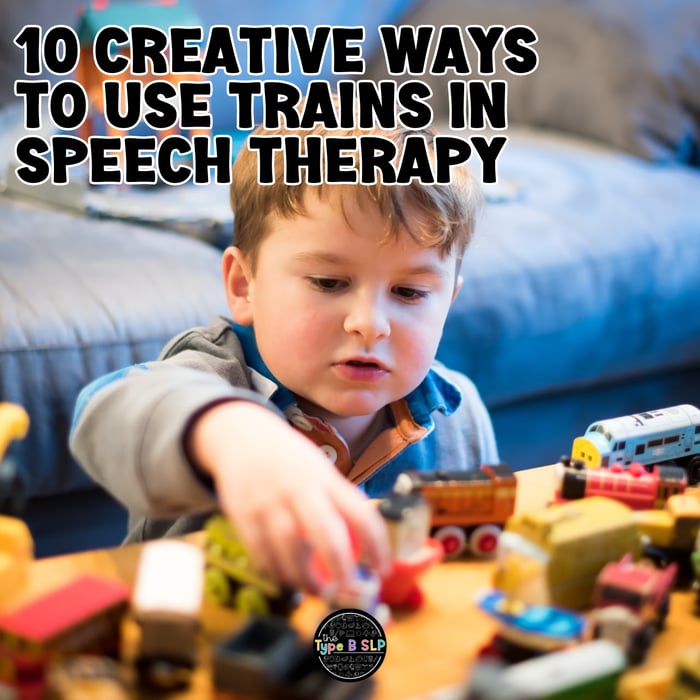
Using a Train Set for all your Speech Therapy Goals!
All Aboard the Speech Express: 10 Creative Ways to Use a Play Train Set in Pediatric Speech Therapy

Chug-chug! The world of pediatric speech therapy is about to get even more exciting as we explore innovative ways to incorporate play train sets into sessions, especially if you're using a play-based speech therapy approach! This is one of my absolute MUST-HAVE toys in my therapy bag. Building on the foundation of play-based therapy, these ideas are designed to captivate while targeting specific speech goals. Get ready to embark on a speech adventure with these 10 creative ways to use play train sets in your pediatric speech therapy practice.
1. Articulation Junction:
Create a 'word station' at various points along your train track. Each station represents a specific speech sound or blend. As the train travels, encourage your young clients to produce words from each station. Sometimes I'll simply use other toys as our "station": snake, slide, small car, skunk - these all work great for /s/ blends! Make it even more informal by jotting down some articulation targets that align with your play: choo-choo, station, stop, track, go, loud, fast, slow, forward, backward, etc.
2. Expressive Language Exploration:
Transform each train car into a different scene or scenario. Encourage children to describe what's happening in each car using expressive language. This activity not only enhances vocabulary but also promotes storytelling skills, fostering creativity and imagination.
3. Phonemic Awareness Parade:
Assign a sound to each train car, and then ask children to identify words that begin or end with that sound. Engage them in sorting and categorizing objects or images related to the assigned sound, promoting phonemic awareness in an interactive way.
4. Following Directions Railroad:
Create a mental track with various twists and turns, and provide verbal instructions for the child to navigate the train along the path that he can't see. This activity targets receptive language skills as children follow directions like "Go straight," "Take a left turn," or "Stop at the station." It's a fun way to enhance listening and comprehension skills. Would also be fun to have the child switch and give YOU directions, too!
5. Conversational Connections Crossing:
Set up a train crossing where two tracks meet. Use this point to stimulate conversation by introducing characters or scenarios that prompt discussion. Did something bad happen? Did something good happen? Is there a problem we need to help solve? This activity fosters social communication skills as children engage in turn-taking, sharing ideas, and responding to each other.
6. Sensory Storytelling Station:
Incorporate sensory elements into the train set, such as textured materials or mini objects. Encourage children to tell a story while engaging with these sensory elements. This multisensory approach enhances language development and engagement during storytelling.
7. Emotion Exploration Express:
Problem solving is a powerful skill to possess. Use people and animal toys alongside your train to create problem solving situations such as forgetting a person back at the station, forgetting something that the train was supposed to carry, the train not working so the people can't get to school, etc.
9. Parent-Child Collaboration Commuter:
Create a collaborative session by involving parents. Assign each family member a role in the train journey, prompting collaborative speech and language activities. This reinforces the importance of play-based therapy at home, creating a supportive environment for speech development.
10. Speech Sound Scavenger Hunt:
Hide objects or images representing target speech sounds along the train track or around your room. Time to take the train for a ride! As the train moves, encourage children to identify and collect these items. This interactive scavenger hunt not only reinforces speech goals but also adds an element of excitement to the therapy session.
As the wheels of the play train set roll along the tracks of speech therapy, creativity and engagement become the driving force behind every session. By incorporating these 10 ideas, pediatric speech-language pathologists can seamlessly integrate play-based therapy into their practice, aligning with the principles of understanding the power of play, tailoring activities to speech goals, creating a playful environment, and involving parents. All aboard the speech express – where every station is a step closer to speech success!
Read more about my tips for play-based speech therapy here!

